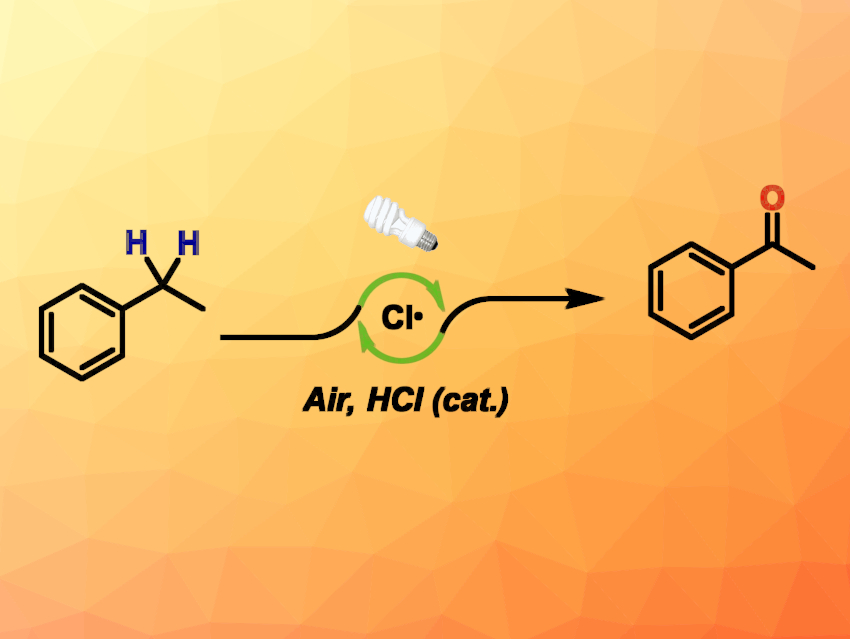Hydrochloric acid is a common reagent in the laboratory and an important bulk chemical in industry. HCl could also be used as a source of chlorine radicals, which can act as hydrogen atom transfer (HAT) reagents with the potential to promote C–H bond oxidations.
The oxidation of alkylarenes to carbonyl compounds, for example, can be useful in organic synthesis. A hydrogen atom transfer can be used to form a reactive radical intermediate from alkylarenes, which can then undergo oxidation by molecular oxygen. However, forming chlorine radicals for such a reaction usually requires the use of a metal, a strong oxidant, or a catalyst.
Qingmin Wang, Nankai University, China, and colleagues have developed a simple and practical photocatalytic approach to producing chlorine radicals from HCl for the oxidation of alkylarenes to carbonyl compounds with air as a sustainable oxidant (pictured). The team used purple LEDs as a light source and acetonitrile (MeCN) as a solvent to convert a wide variety of alkylarenes to the corresponding carbonyl derivatives in the presence of HCl. The products were obtained in moderate to excellent yields. Other substrates such as toluene, benzaldehyde, benzyl alcohol, and triphenylsilane could also be converted to the corresponding oxidation products.
Aryl carbonyl compounds are found, e.g., in natural products, pharmaceuticals, and materials. Therefore, this mild and practical reaction could be useful for numerous syntheses.

- HCl‐Catalyzed Aerobic Oxidation of Alkylarenes to Carbonyls,
Kaikai Niu, Xiaodi Shi, Ling Ding, Yuxiu Liu, Hongjian Song, Qingmin Wang,
ChemSusChem 2021.
https://doi.org/10.1002/cssc.202102326




